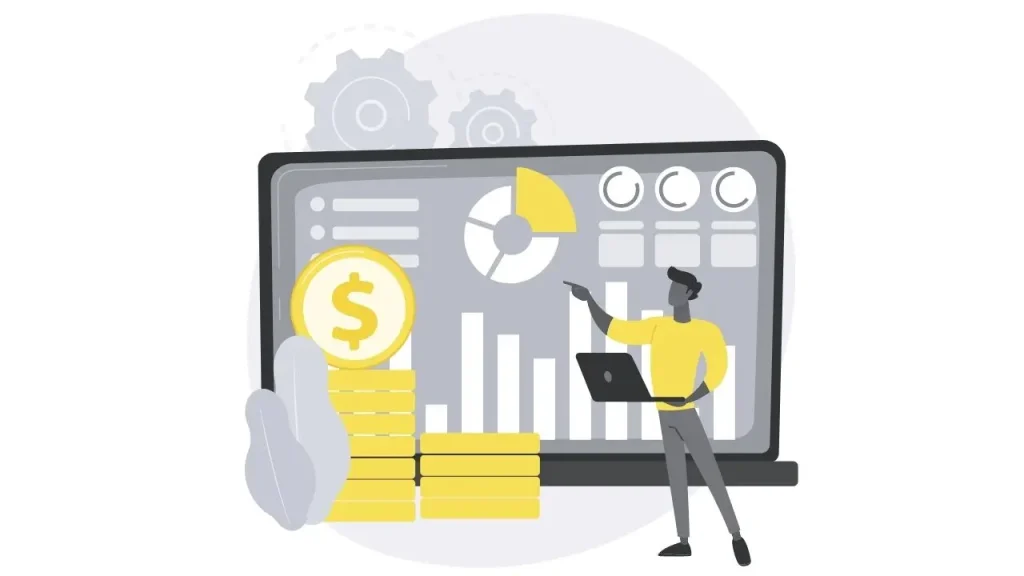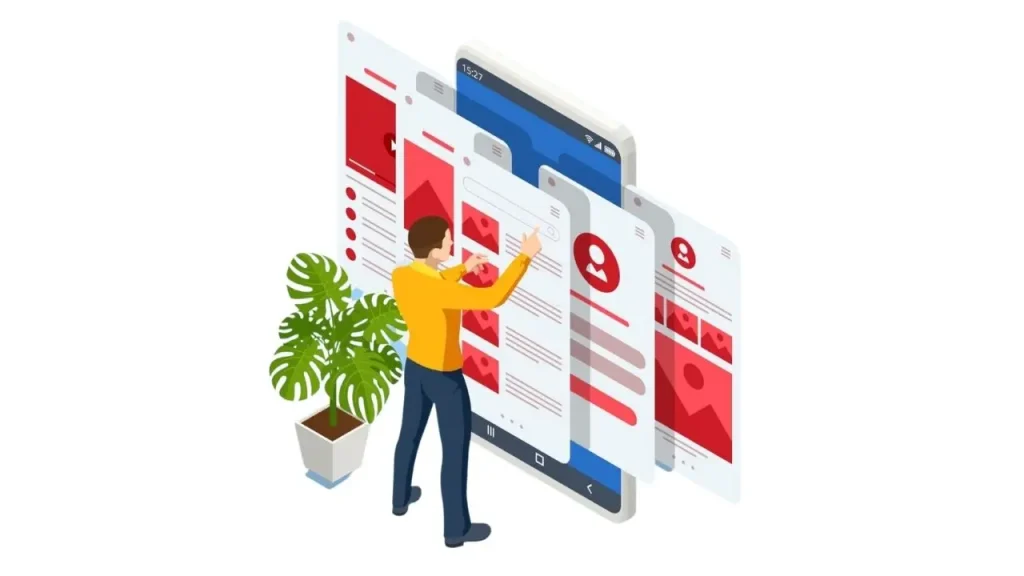Mobile applications have become a vital component of our lives in today’s digital environment. Smartphone apps, sometimes known as apps, are software programs created expressly for use on mobile devices such as smartphones and tablets. Mobile app usage has expanded tremendously over the years, and with an increasing number of people using smartphones, mobile apps have become a requirement for businesses to contact their clients.
In this blog post, we will look at the significance and benefits of mobile applications. We will also look at the many types of mobile applications, the mobile app development process, monetization techniques, current mobile app trends, and future forecasts for the mobile app market.
Types of Mobile Applications

There are three main types of mobile applications: native apps, hybrid apps, and web apps.
Native Apps
- Native apps are designed specifically for a mobile platform, such as iOS or Android. Native apps offer the advantage of being able to utilise all of the device’s functions, such as GPS, camera, and microphone. Native apps also provide the best speed and user experience because they are created with the platform’s specific programming language. Nevertheless, because each platform requires a distinct codebase, developing native apps may be time-consuming and costly.
Hybrid Apps
- Native apps are built to run on specific mobile platforms, such as iOS or Android, and are able to take advantage of all the device’s features, such as its GPS, camera, and microphone. This offers the best performance and user experience as the programming language for the platform is used in the development. This does come at a cost though, as developing native apps requires a codebase for each platform, making the process time-consuming and costly.
Web Apps
- Web applications are websites that have been optimised for mobile use and may be viewed using a mobile browser. Web applications offer the benefit of being available from any internet-connected device, including desktop computers, laptop computers, and mobile devices. Online applications are simple to create and maintain since they don’t require installation or upgrades. Web applications, on the other hand, may not have the same amount of functionality as native or hybrid apps, and they may not run offline.
Advantages of Mobile Applications

Mobile applications offer numerous advantages compared to standard web-pages or desktop applications. Following are some of the main benefits of mobile applications:
Improved User Experience
- Mobile applications outperform traditional web pages and desktop programs in terms of user experience. Mobile applications are created particularly for mobile devices, therefore they are optimized for smaller screen sizes and touch interfaces. Mobile applications also provide quicker loading times, improved navigation, and push alerts, all of which improve the user experience.
Increased Accessibility
- As long as there is an internet connection, mobile applications may be used from anywhere, at any time. This implies that businesses may reach out to their consumers at any time and from any location, increasing their exposure and client engagement. Mobile applications also include mobile-only capabilities, such as location-based services, which improve accessibility even further.
Ability to Work Offline
- Mobile applications can be designed to work offline, which means users can access data even when they are not connected to the internet. This is especially useful for users who travel frequently or have limited access to the internet. Offline mode also improves app performance by reducing the need for data transfer.
Enhanced Branding Opportunities
- Mobile applications offer custom branding opportunities, which allow businesses to increase their visibility and brand recognition. Custom branding includes custom icons, splash screens, and app themes. Mobile applications also offer targeted marketing opportunities, such as push notifications, which allow businesses to communicate directly with their customers.
Better Customer Engagement and Retention
- Mobile applications offer better customer engagement and retention than traditional websites or desktop applications. Mobile apps offer personalized content, easy customer feedback, and loyalty programs, which improve customer satisfaction and retention. Mobile apps also allow businesses to gather user data and analyze user behaviour, which can be used to improve the app and the customer experience.
Mobile Application Development Process

The mobile application development process involves several stages, including planning, design, development, testing, and deployment.
- Planning: In the planning stage, the purpose of the app, target audience, features, and monetization strategy are defined. A mobile app development company or a freelance developer can be hired for this stage.
- Design: The design stage involves creating wireframes, prototypes, and visual designs. The design stage is important as it sets the tone for the app and determines its overall look and feel.
- Development: The development stage involves coding the app using the appropriate programming language and platform. This stage can take several months, depending on the complexity of the app.
- Testing: The testing stage involves testing the app for functionality, usability, and performance. Bugs and issues are identified and fixed during this stage.
- Deployment: The deployment stage involves releasing the app to the app store and making it available for download.
Monetization Strategies for Mobile Applications

Mobile applications can be monetized in several ways, including:
- Paid Apps: Paid apps require users to pay a one-time fee to download and use the app. This monetization strategy works best for apps that offer unique or premium features.
- In-App Purchases: In-app purchases allow users to purchase virtual goods or services within the app. This monetization strategy works best for gaming and entertainment apps.
- Advertising: Advertising involves displaying ads within the app. This monetization strategy works best for apps with a large user base.
- Subscriptions: Subscriptions require users to pay a recurring fee to access premium content or services within the app. This monetization strategy works best for news and media apps.
Current Trends in Mobile Applications

There are various current trends in mobile apps, some of which are shown here. The mobile app business is always changing.
- Artificial Intelligence (AI): AI is being utilised to make mobile applications that are more sophisticated and customised. Mobile apps with AI capabilities may offer speech recognition, chatbots for customer assistance, and tailored suggestions.
- Augmented Reality (AR): Mobile applications are becoming more immersive and engaging thanks to augmented reality (AR). AR-enabled smartphone applications can offer virtual product trials, gaming, and instructional content.
- Internet of Things (IoT): To build experiences for smart homes and smart cities, IoT is being incorporated into mobile applications. Mobile IoT apps may manage smart devices, keep an eye on energy usage, and deliver data in real time.
- Instant Apps: Applications that may be tried right now without having to download them are known as instant apps.
Future Predictions for the Mobile Applications Industry

In the upcoming years, it is anticipated that the mobile app market would expand more. These are some forecasts about the mobile app market’s future:
- Intensified Usage of Wearable: As wearable technology gains popularity, smartphone apps will be created to work with it, bringing users brand-new, cutting-edge user experiences.
- Security Issue: More Security will be a primary issue as mobile apps become increasingly incorporated into our daily lives. Developers of mobile apps must concentrate on creating safe apps that safeguard user data and thwart hackers.
- Rise of Mobile Commerce: As more individuals use their cellphones to make purchases, mobile commerce is predicted to expand. To address this expanding demand, mobile apps must offer simple and secure checkout processes.
Conclusion
Since they provide better user experiences, higher accessibility, and better customer engagement and retention, mobile apps have become an indispensable part of our lives. Planning, design, programming, testing, and deployment are just a few of the phases that go into creating a mobile application. Paid applications, in-app purchases, advertising, and subscriptions are just a few of the ways that mobile applications may be made profitable. Artificial intelligence, augmented reality, the Internet of Things, and instant apps are current developments in mobile apps. Wearable technology use, security awareness, and mobile commerce expansion are predicted to all expand in the future of the mobile app market.
Mobile applications will undoubtedly continue to play a significant role in our lives as the globe gets more mobile. Mobile apps offer an easy and simple method to connect with the digital world, whether it is for communication, education, entertainment, or business. So, to design effective and cutting-edge mobile applications that satisfy consumers’ requirements and expectations, organisations and developers must keep up with the most recent trends and best practices. Also Read this How To Optimize Your PC for Best Performance






















